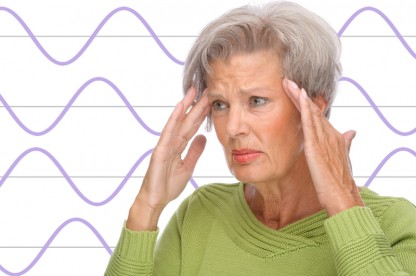Find Natural Migraine Relief Using Non-invasive Electrical Stimulation
 Have you tried everything to get rid of your headaches? While pharmaceuticals, lifestyle changes, and supplements may help for some, migraines often don’t respond to treatment and can become persistent and debilitating. Most drugs used to treat migraines come with high rates of side effects, and people with chronic headaches are often resistant or tolerant to these drugs.[1]
Have you tried everything to get rid of your headaches? While pharmaceuticals, lifestyle changes, and supplements may help for some, migraines often don’t respond to treatment and can become persistent and debilitating. Most drugs used to treat migraines come with high rates of side effects, and people with chronic headaches are often resistant or tolerant to these drugs.[1]
Alternative options are desperately needed for migraine sufferers. Studies have investigated technologies that stimulate the brain with electrical impulses (neurostimulation) as a way to prevent and treat migraines. Non-invasive, portable devices have even been developed for at-home use. So far, research shows that these devices can be extremely effective at providing drug-free, natural migraine relief.
What is neurostimulation?
Nerve cells, or neurons, communicate with each other by generating electrical signals. Neurostimulation uses electrical impulses from a machine to activate neurons. Some forms of neurostimulation require surgery, as electrodes can be placed deep in the brain to stimulate specific sets of nerves for a specific purpose. For example, patients with Parkinson’s respond well to deep brain stimulation that activates neurons related to movement.
However, there are also techniques that are completely non-invasive and use electrodes placed on the scalp. In the last decade, methods of neurostimulation have been developed for managing pain.[2] Specifically, some researchers have looked at the use of neurostimulation for preventing and managing migraine and headache pain.
Portable neurostimulation headband approved by FDA
The FDA-approved Cefaly® device[3] is worn like a headband across the forehead and over the ears. It attaches to the skin using a self-adhesive electrode, runs on a battery, and is portable. This sensation is described as tingling sensation for many users, but some people have found it to be painful.[5] In 2013, a study published in the journal Neurology found that migraine patients who used this device had significantly fewer migraine attacks, monthly headache days, and took less anti-migraine medication.[4]
Supraorbital neurostimulation, as used with the Cefaly® device, has been shown to have sedative effects, as it can decrease arousal and cause fatigue.[2] But a follow-up study showed that adverse events were seen in only 4.3% of the 2,313 headache subjects treated with the Cefaly® device, and only 2% discontinued treatment due to side effects. Further, 53.4% were satisfied with the treatment and the device, and chose to purchase it after a trial period.[5]
Tension-type headache may also benefit
A similar type of treatment was found to help tension-type headache. A study compared the effectiveness of the drug imipramine to non-invasive electrical nerve stimulation and found that both treatments reduced chronic tension-type headache severity and frequency, however the drug imipramine was more effective.[6]
Personal-use devices like the Cefaly® headband are non-invasive, safe, and well-tolerated treatment options for finding natural migraine relief.
Share your experience
Have you, or someone you know, tried neurostimulation to treat migraine pain? Did it provide you with relief? Share your experience in the comments section below.
[1] Lancet Neurol. 2012 Aug;11(8):708-19.
[2] BMC Neurol. 2011 Oct 28;11:135.
[3] FDA Press Announcement. 2014.
[4] Neurology. 2013 Feb 19;80(8):697-704.
[5] J Headache Pain. 2013 Dec 1;14:95.


 Ask the EN Experts March 2025
Ask the EN Experts March 2025  Vegan Diet Better Than Omnivore Diet for Cardiovascular Health
Vegan Diet Better Than Omnivore Diet for Cardiovascular Health 